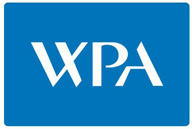Postural Realignment
What is postural realignment?
Postural realignment involves a postural assessment, advice about your posture and exercises to help you improve your posture. At Platinum Physiotherapy, the physiotherapists will look at your posture in the treatment session. If it appears that postural problems are causing or adding to your problems and pain, postural realignment will be included as part of your treatment.
- Postural assessment: identifying any tight or weak muscles that may be causing you to maintain a poor posture and also any joint stiffness or hypermobility that may cause poor posture.
- Postural advice: this includes advice about correct sitting and standing positioning, moving and handling techniques that will help to improve your posture. The advice will be specific to you and therefore will consider your occupation, driving habits and other activities. This will allow you to implement our advice into your day.
- Exercises to improve posture: these are exercises that will help you to strengthen any weak muscles or stretch any tight muscles that are causing you to adopt a poor and maybe painful posture. Exercises are also given to loosen stiff joints, or provide more stability to those that are more mobile than they should do.
Who will benefit from postural realignment?
Anyone with a poor posture, muscle imbalance and pain will benefit from a full postural assessment and realignment. An optimum posture will help you to be more functional and reduce your pain levels.
There are different types of postural problems:
- Kypholordosis: this is an exaggeration of the normal curves in the lower and upper back. This can cause weak neck, stomach, buttock and hamstring muscles. Your hip and back muscles may be tight and need stretching.
- Flat Back: the natural curves of the back are lost causes the spine to be flat. This may result in weak hip and back muscles and tight hamstring muscles.
- Sway Back: this is a forward tilting of your pelvis and may cause weak hip, back, stomach and neck muscles. Your hamstrings may also be tight.
- Round Shoulders: this creates a hunched posture and causes the upper back muscle to be stretched and weak and your pectoral muscles to become tight.
- Lordosis: an exaggerated inward curve of the spine causing some muscles to become tight and some to become weak depending on the location of the lordosis.
- Kyphosis: this is an exaggeration of the outward curves in the spine which causes a muscle imbalance in the surrounding area.
- Leg Length Discrepancies: this is a difference in the overall measurements between the two leg lengths. True leg length is a difference in the actual lengths due a discrepancy in bone lengths. Apparent leg length is due to soft tissue shortening around the pelvis, legs and ankle that makes the leg length appear different.
- Scoliosis: a sideways curve of the spine that may be corrected by strengthening the back muscles that support the spine.
- Poking Chin Posture: this posture can result in neck pain and headaches due to the muscle imbalance and stiffness around these areas.
What are the benefits of postural realignment?
Having a poor posture can cause a cycle of muscle imbalance and pain which is difficult to stop without intervention. Poor posture will cause you pain and this pain will make it difficult to regain an optimum posture without physiotherapy.
Having postural alignment as part of your treatment can produce many benefits including:
- Reducing pain
- Strengthening weak muscles
- Stretching overused muscles
- Loosening and strengthening stiff joints
- Improving general posture
- Improving function
At Platinum Physio, the specialist physiotherapists will work with you to try and create the optimum posture and reduce your pain. They will carry out a full postural assessment and design a treatment programme specifically for your needs.
Contact Us




![axa_ppp_logo[1]](https://www.platinumphysio.co.uk/wp-content/uploads/axa_ppp_logo1.gif)

![cigna[2]](https://www.platinumphysio.co.uk/wp-content/uploads/cigna2.png)